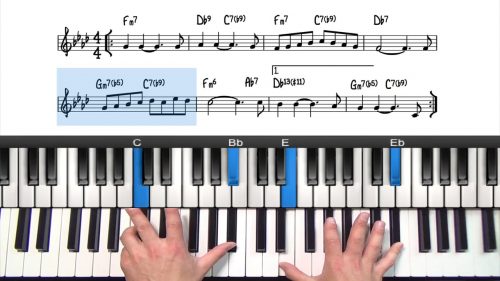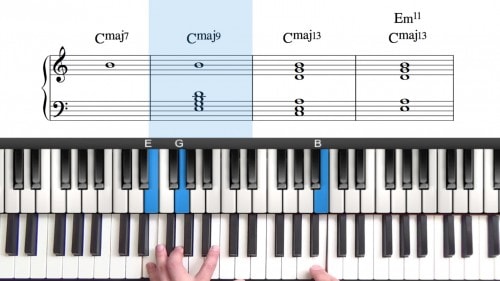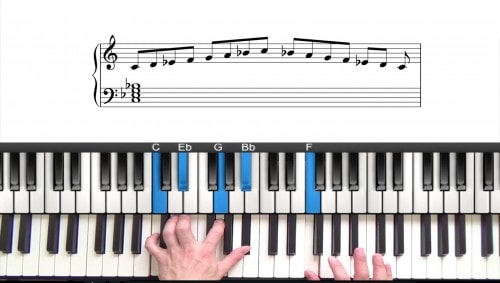Elegant, Efficient, & Ergonomic Chord Voicings
In this 5 minute masterclass we will explore the key principles for creating elegant, efficient, & ergonomic chord voicings. You can apply these principles to any chord types and any chord qualities.
Lack Of Redundancy
The most important thing to create an elegant chord voicing is ‘lack of redundancy’. In order for our chord voicings to ‘sing’ and to be easily and efficiently moved around the keyboard, an important consideration is not to double notes unnecessarily.
In this lesson we will give examples using the different chord types and the registers of the piano. We will explore and demonstrate how, and how not, to use doubled notes efficiently, and elegantly.
Lack Of Symmetry
Purely ‘symmetrical voicings’ can also be something to avoid. By simply stacking chord tones sequentially, we create a very linear sound. We will apply a selection of different intervals to the same chord voicing to demonstrate how this can achieve a wide variety of colours and textures.
Lesson Downloads
-
Efficient Voicings Lesson Notation File Type: pdf
Practice Tips
-
Utilise shell voicings in the left hand to reduce redundancy.
-
This frees up your right hand to access the upper extensions and alterations of the chord.
-
This also allows you to manipulate each hand independently to give you greater freedom and creatively to outline specific chord colours and textures.
-
In the higher registers of the piano, we have greater freedom to double notes because the wavelength of the chords is smaller.
- In the lower register of the piano, we must be more cautious about doubling notes and apply symmetrical voicings because it creates a ‘muddy’ sound.







